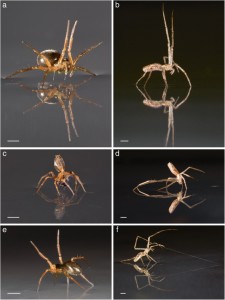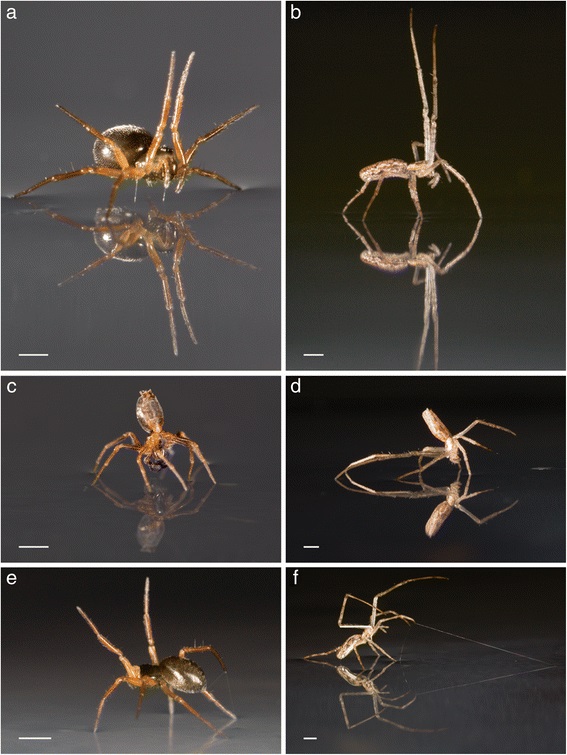
Spiders have been known to fly, using their silk to”ballon” to new environments.
They are also adept sailors, using the wind to travel long distances and colonize new lands, according to research published in the journal BMC Evolutionary Biology.
“Once on the water surface, spiders react to the wind by raising their legs as sails,” the international team of scientists found. “Sailing spiders smoothly and stealthily slide on the water surface without leaving any turbulence… The spider releases silk on water surface and slows down its movement, or stops, against the prevailing wind.”
The scientists, from the University of Nottingham, the Natural History Museum in London, as well as Japanese and Spanish institutions, observed 325 individual spiders from 21 different species.
They found a half-dozen techniques the spiders use to travel along the surface of water, including using their abdomens as a kind of sail while doing a handstand-like posture on the water.
The sailing spiders were also the adventurous arthropods most likely to want to “balloon,” according to the researchers.
The ballooning and sailing techniques are used by young spiders or those arachnids that are living in a stressed environment, scientists believe. The ballooning technique became the talk of the scientific world in May when a small town in South Australia was covered in baby spider webbing that has become known locally as “Angel Hair.”
The sailing and ballooning methods of travel probably explains why spiders of various species are among the first to colonize desolate places such as reclaimed lands, and volcanic islands, the scientists said.







